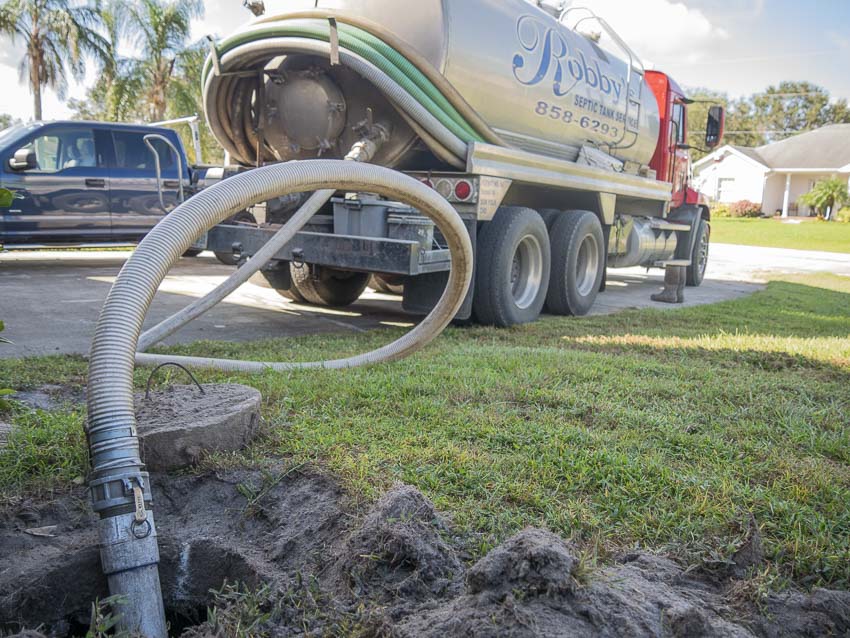Stillwell Septic And Grading - Truths
Stillwell Septic And Grading - Truths
Blog Article
4 Simple Techniques For Stillwell Septic And Grading
Table of ContentsA Biased View of Stillwell Septic And GradingFascination About Stillwell Septic And GradingA Biased View of Stillwell Septic And GradingThe Best Guide To Stillwell Septic And GradingWhat Does Stillwell Septic And Grading Do?A Biased View of Stillwell Septic And GradingThe Stillwell Septic And Grading Diaries
Generally, septic system setup is an intricate procedure that needs careful planning and implementation. Home owners need to function with a trustworthy installation team and recognize neighborhood laws and needs to make certain that their septic system operates correctly for several years ahead. After the sewage-disposal tank has been installed and linked to the drainpipe field, it is time to backfill the location.The backfill product ought to be complimentary of clods, large rocks, icy issue, and debris that can lead to voids in the backfill that may enable settling gradually. Squashed rock or pea crushed rock 1/2-inch in size is favored if native products are not ideal. When the backfilling is complete, it is time to landscape the area.
Once the septic tank has been mounted, it is critical to evaluate it to guarantee that it is functioning appropriately (Septic Tank Installation). https://peatix.com/user/21382337/view. Checking the system entails looking for leakages, making certain that the tank is at the proper degree, and taking a look at the drainpipe area. Among the most usual tests executed is the hydraulic lots test
All about Stillwell Septic And Grading
The water is then monitored to guarantee that it moves properly via the pipes and into the drainpipe field. If the water does not move properly or supports right into the tank, it may indicate a trouble with the system. An additional examination that is frequently carried out is the color examination.
The dye is then kept track of to ensure that it moves appropriately via the pipelines and right into the drain area. If the dye does not flow correctly or shows up in the wrong place, it might indicate a problem with the system. It is important to have a professional carry out these examinations to make certain that they are done appropriately.

See This Report on Stillwell Septic And Grading
Below are some important tips for property owners to keep their septic system: The average home septic system ought to be examined at the very least every 3 years by a septic service expert. The regularity of pumping depends on the size of the tank and the variety of people utilizing it. https://www.openstreetmap.org/user/stillwellsag. A basic guideline is to pump the tank every 3 to five years
Utilizing water-efficient fixtures and home appliances, such as low-flow showerheads and bathrooms, can lower water use and assist the septic system work more efficiently. Just flush commode paper and human waste down the bathroom. Prevent flushing anything else, including feminine hygiene items, child wipes, and cooking grease, as they can block the system.
Stillwell Septic And Grading - An Overview
Septic system installment is a complicated procedure that needs careful preparation and implementation. Home owners should be aware of the essential steps entailed in the installation procedure to make sure that their septic system operates effectively and efficiently. The initial step is to examine the website where the septic system will certainly be mounted.
As soon as the site has actually been assessed, the following action is to prepare for the setup. House owners must guarantee that their service provider is experienced in septic container setup and will certainly function alongside them throughout the process.
A Biased View of Stillwell Septic And Grading

Home owners have to understand the essential actions involved in the installation process to make sure that their septic system works correctly and successfully. By adhering to these actions and maintaining their system, home owners can rest ensured that their septic tank will certainly give reputable wastewater therapy for years to come.
Almost one in five U.S. homes have septic tanks. Yours may be one of them. If you're not appropriately keeping your septic tank, you're not just harming the environment, you're placing your household's health and wellness at riskand might be purging hundreds of bucks down the drainpipe! Do Your Component, Be SepticSmart: The Do's and Do n'ts of Your Septic tank.
The Basic Principles Of Stillwell Septic And Grading

All that additional water can really strain your septic system. Surprise the usage of water-generating devices. This can be useful specifically if your system has not been pumped in a very long time. Become more water efficient by fixing pipes leakages and think about mounting restroom and kitchen tap aerators and water-efficient items.
Some Of Stillwell Septic And Grading
Know your system's area. When you have the container pumped, attract a diagram More Bonuses or map showing its place in connection with fixed factors - edges of the residence, actions, or fence posts. Ask the pumper to aid you find the drainfield. Note its area on your representation, together with the area of your alcohol consumption water well.
Reduce the amount of wastewater that should be treated and disposed of by your system: Laundry no even more than one or 2 tons of clothing daily. Up to 53 gallons of water flooding your septic system with each load, so it's best to spread out laundry out over the week.
Report this page